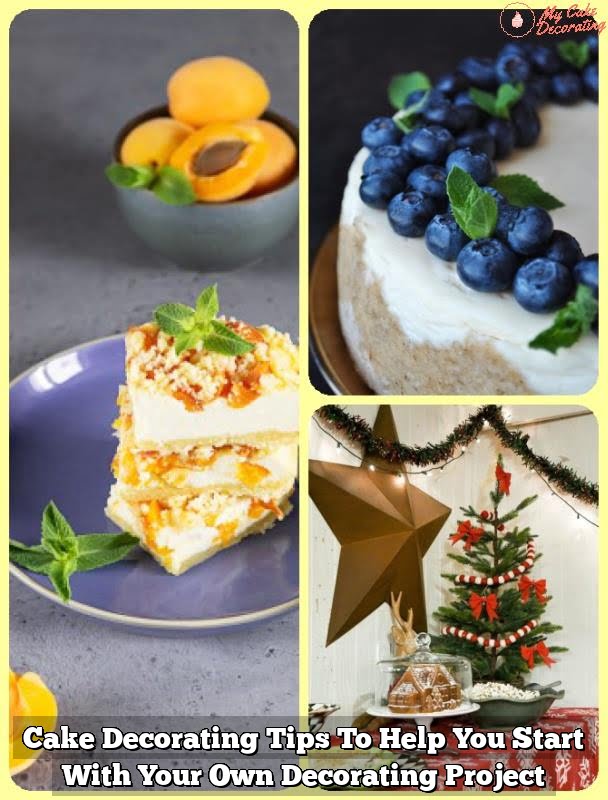Liquid glucose is a versatile ingredient that plays a vital role in baking and cake decorating. So, what is liquid glucose used for in cake decorating? This article will delve into the definition of liquid glucose and its importance in achieving specific textures and flavors in baked goods. Whether you’re a seasoned baker or just starting out, understanding the role of liquid glucose can take your cake decorating skills to the next level.
In the world of baking, liquid glucose is known for its ability to enhance texture and moisture in cakes and other confections. It also serves as a key ingredient in preventing crystallization in frostings and fillings. Beyond texture, liquid glucose can have a significant impact on the flavor profile of baked goods, as well as extend their shelf life.
The use of liquid glucose isn’t limited to just cakes; it also finds its way into popular cake decorating techniques. From fondant to modeling chocolate, incorporating liquid glucose can elevate the quality and workability of these decorative elements. Throughout this article, we’ll explore the various ways that liquid glucose contributes to the artistry and taste of your baked creations.
The Role of Liquid Glucose in Cake Decorating
Liquid glucose, also known as glucose syrup, is a versatile ingredient that plays a crucial role in cake decorating. Its thick, viscous consistency and sweet flavor make it an essential component in achieving specific textures and flavors in baked goods. In cake decorating, liquid glucose serves several purposes, from enhancing texture and moisture to extending the shelf life of decorated cakes and desserts.
In cake decorating, liquid glucose is used for various purposes:
- Adding Shine: Liquid glucose can be brushed onto fondant-covered cakes to create a glossy finish.
- Making Edible Glue: When mixed with water, liquid glucose can be used to adhere edible decorations to cakes and other treats.
- Preventing Crystallization: When making fillings or frostings, the addition of liquid glucose helps prevent crystallization, resulting in smooth and creamy textures.
Additionally, liquid glucose can be incorporated into modeling chocolate and fondant recipes to improve their pliability and prevent them from becoming too dry or brittle. Its ability to enhance moisture retention makes it an ideal ingredient for creating beautifully sculpted cake decorations that remain soft and workable.
Incorporating liquid glucose into your cake decorating projects can significantly impact both the texture and flavor of your creations. Whether you are looking to achieve a glossy finish on your fondant-covered cake or extend the shelf life of your decorated desserts, liquid glucose offers a range of benefits that elevate the overall quality of your baked goods.
Enhancing Texture and Moisture With Liquid Glucose
Liquid glucose plays a crucial role in enhancing the texture and moisture of cakes and other baked goods. Its unique properties make it an invaluable ingredient in achieving the perfect consistency and mouthfeel in desserts. Here are some specific ways in which liquid glucose contributes to the overall quality of baked treats:
- Reducing crystallization: Liquid glucose acts as a humectant, meaning it attracts and retains moisture. This helps prevent the crystallization of sugars in frostings, fillings, and confections, resulting in a smooth and creamy texture.
- Improving tenderness: When used in cake batters, liquid glucose can help tenderize the crumb of the cake, leading to a softer and more enjoyable texture.
- Enhancing moistness: Liquid glucose adds moisture to baked goods, prolonging their freshness and preventing them from drying out too quickly.
In cake decorating specifically, liquid glucose is often used to create glossy or shiny finishes on icings and glazes. It also serves as a key ingredient in making fondant pliable and easy to work with. By incorporating liquid glucose into cake decorating recipes, bakers can achieve professional-looking results with improved texture and long-lasting moisture.
Ultimately, whether you’re looking to create the perfect frosting for your cakes or ensure that your baked goods stay fresh for longer periods of time, liquid glucose is an essential tool for achieving optimal texture and moisture in your baking and cake decorating endeavors.
Improving Flavor and Shelf Life
Liquid glucose is not just a useful ingredient for achieving specific textures and moisture in baked goods, but it also plays a crucial role in improving the flavor and extending the shelf life of decorated cakes and desserts. In this section, we will explore the impact of liquid glucose on flavor and shelf life, providing insight into how this versatile ingredient can enhance the overall quality of baked treats.
Impact on Flavor
One of the key benefits of using liquid glucose in cake decorating is its ability to improve the flavor profile of baked goods. Liquid glucose acts as a humectant, meaning it retains moisture and prevents dryness in cakes and pastries.
This results in a moist, tender crumb that contributes to a more flavorful eating experience. Additionally, liquid glucose has a milder sweetness compared to granulated sugar, allowing other flavors in the cake or frosting to shine through without being overpowered by excessive sweetness.
Extending Shelf Life
In addition to enhancing flavor, liquid glucose helps extend the shelf life of decorated cakes and desserts. By inhibiting crystallization in frostings and fillings, liquid glucose contributes to a smoother texture and appearance while also preventing these components from becoming overly hard or grainy over time. As a result, cakes decorated with frostings or fillings containing liquid glucose can be stored for longer periods without compromising their taste or texture.
Overall, incorporating liquid glucose into cake decorating not only improves the flavor profile of baked goods but also ensures that these delectable creations maintain their quality for an extended period. Experimenting with liquid glucose in your baking projects can lead to delectable treats that are not only visually stunning but also irresistibly flavorful and long-lasting.
Substitutes for Liquid Glucose
Liquid glucose is a versatile ingredient that plays a crucial role in cake decorating, but there may be instances when you find yourself without this sweetener on hand. In such cases, it’s helpful to know about substitutes for liquid glucose that can still achieve similar results in your baked goods and decorations.
Alternative Sweeteners
When looking for a substitute for liquid glucose, it’s essential to consider ingredients with similar properties. Corn syrup is a popular alternative to liquid glucose due to its ability to prevent crystallization and provide moisture in baked goods. Honey and golden syrup can also be used as substitutes, although they may impart slightly different flavors to the finished product.
Thickeners and Stabilizers
In the absence of liquid glucose, other thickeners and stabilizers can be used to achieve similar effects in cake decorating. Glycerin, for example, can help prevent icing from becoming too hard or brittle. Agar agar and pectin are natural thickening agents that can be utilized in frostings and fillings as alternatives to liquid glucose.
Adjusting Recipes
When substituting for liquid glucose, it’s important to make adjustments to the overall recipe to accommodate the characteristics of the alternative ingredient being used. For instance, if using honey instead of liquid glucose, it may be necessary to reduce the amount of sugar called for in the recipe. Similarly, when using corn syrup as a substitute, you may need to tweak proportions of additional liquids or dry ingredients.
By understanding these alternative options and how they can be incorporated into your baking endeavors, you can confidently navigate situations where liquid glucose is not readily available. Experimenting with different substitutes allows you to adapt recipes while still achieving desirable textures and flavors in your decorated cakes and desserts.
Using Liquid Glucose in Fondant and Modeling Chocolate
Liquid glucose is an essential ingredient in creating smooth, pliable fondant and modeling chocolate for cake decorating. Its unique properties play a significant role in achieving the desired texture and consistency in these confections. When added to fondant and modeling chocolate recipes, liquid glucose helps prevent crystallization, making it easier to work with and mold into various shapes and designs.
In fondant, liquid glucose serves as a humectant, which means it retains moisture and keeps the fondant soft and supple. This is crucial for covering cakes without drying out or cracking. Additionally, liquid glucose improves the elasticity of fondant, allowing it to stretch and adhere smoothly to the cake’s surface without tearing. As for modeling chocolate, liquid glucose acts as a binding agent, helping to create a firm yet pliable mixture that can be sculpted into intricate decorations.
When incorporating liquid glucose into fondant or modeling chocolate recipes, it’s important to follow specific measurements for optimal results. For fondant, roughly 1 tablespoon of liquid glucose per pound of icing sugar is typically recommended. In the case of modeling chocolate, using approximately 1 tablespoon of liquid glucose for every 8 ounces of chocolate will help achieve the desired pliability.
For those new to using liquid glucose in fondant and modeling chocolate, it may take some trial and error to get the proportions just right. However, once mastered, the addition of liquid glucose can make a significant difference in the overall quality and workability of these essential cake decorating elements.
| Liquid Glucose Application | Recommended Proportions |
|---|---|
| Fondant | 1 tbsp per pound of icing sugar |
| Modeling Chocolate | 1 tbsp per 8 ounces of chocolate |
Tips and Tricks for Working With Liquid Glucose
Liquid glucose is a versatile ingredient that plays a crucial role in achieving the perfect texture and flavor in cake decorating. It is a thick, clear syrup that consists mainly of glucose, maltose, and maltodextrins. In cake decorating, liquid glucose serves as a humectant, which means it helps retain moisture to prevent cakes and other baked goods from drying out. Additionally, it helps to prevent crystallization in frostings and fillings.
When using liquid glucose in cake decorating, it is important to keep a few tips and tricks in mind. First and foremost, storing liquid glucose properly is essential for maintaining its quality. It should be kept in an airtight container at room temperature to prevent it from crystallizing, which can occur when exposed to extreme temperatures. If crystallization does occur, the syrup can be gently heated to dissolve the crystals.
For accurate measurements of liquid glucose, it is helpful to lightly oil the measuring utensil before pouring the syrup. This will ensure that the syrup easily slides out without leaving any residue behind. When working with recipes that call for liquid glucose, take note of its viscosity and adjust the quantities of other liquids or dry ingredients accordingly. This will help maintain the desired consistency of batters, frostings, or fillings.
Additionally, when incorporating liquid glucose into frosting or fondant recipes, it may be beneficial to warm the syrup slightly before adding it to other ingredients. This will make it easier to mix in and distribute evenly throughout the mixture. By following these tips and tricks for working with liquid glucose, cake decorators can harness its unique properties to achieve exceptional results in their creations.
| Tip | Trick |
|---|---|
| Store liquid glucose in an airtight container at room temperature | Lubricate measuring utensils for accurate measurements |
| Adjust recipe quantities based on the viscosity of liquid glucose | Heat liquid glucose before adding it to frostings or fondants for easier mixing |
Conclusion
In conclusion, liquid glucose is a versatile and invaluable ingredient in the world of cake decorating. Its ability to enhance texture, moisture, flavor, and shelf life makes it a valuable tool for bakers and decorators alike. Whether used in frostings, fillings, fondant, or modeling chocolate, liquid glucose plays a crucial role in achieving professional-quality results.
For those wondering what liquid glucose is used for in cake decorating, the answer is simple: it serves as a sweet addition to your baking arsenal. By incorporating liquid glucose into your recipes, you can elevate the quality of your cakes and desserts while also extending their shelf life. Additionally, the tips and tricks for working with liquid glucose will help bakers navigate any potential challenges with ease.
As this article has highlighted, experimenting with liquid glucose opens up a world of possibilities in the realm of cake decorating. It’s an ingredient worth exploring for both its functional and creative benefits. So whether you’re a seasoned pro or just starting out on your baking journey, consider adding liquid glucose to your repertoire and watch how it transforms your confections into works of edible art.
Frequently Asked Questions
How Do You Use Liquid Glucose in a Cake?
Liquid glucose is commonly used in cake recipes as a sweetener and to improve the texture of the cake. It helps to retain moisture, prevent crystallization, and enhance the flavor.
What Does Glucose Do in a Cake?
Glucose plays several important roles in a cake. It acts as a humectant, which means it helps to keep the cake moist by attracting and retaining water. It also contributes to the browning process during baking.
What Is the Purpose of Liquid Glucose?
The purpose of liquid glucose in baking is mainly for its functional properties. Aside from its sweetening effect, it helps to improve the texture, structure, and shelf life of baked goods. It also prevents sugar from crystallizing and keeps products soft and moist.

Welcome to my blog about home and family. This blog is a place where I will share my thoughts, ideas, and experiences related to these important topics. I am a stay-at-home mom with two young children. I hope you enjoy reading it! and may find some helpful tips and ideas that will make your home and family life even better!





